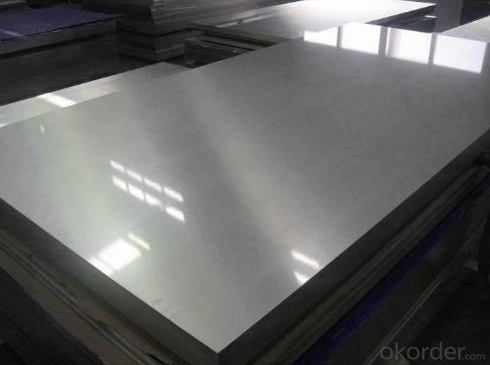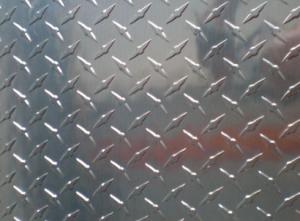Midwest Marine Grade Aluminum Sheets for Shipbuilding
- Loading Port:
- China main port
- Payment Terms:
- TT OR LC
- Min Order Qty:
- 5 m.t.
- Supply Capability:
- 360 m.t./month
OKorder Service Pledge
OKorder Financial Service
You Might Also Like
Specification
Marine Grade Aluminum plate for shipbuilding
1. Commodity: 5083 Aluminium Plain Sheet for Marine Use
2. Alloy No.: 050 1060 1100 3003 3004 3104 3005 3105 5005 5052 8011
3. Size: Thickness: 0.15-5.00mm(Tolorance±0.02mm) Width:200-1600mm(Tolorance±1mm) Length:500-1500mm(Tolorance±1mm)
4.Application:
1) air plane, refrigerators ,audio equipment
2)building materials: ceilings, walls
3)telephones, digital cameras
4) plastic composite board, aluminum and plastic pipe
5.Month Capacity: 5000MT/Month
6.Pattern: 2 bars, 3 bars, 5 bars, diamond bar
1. | Item | Aluminum plate/ Aluminum sheet,aluminium plate price, aluminium chequer plate,aluminium sheet,aluminium sheet price | |
2. | Standard | ATSTM,AISI,JIS,EN,GB | |
3. | Material | 1060,1200,1100,a1100P,3003,3004,5052,5652,5154,5254,5454,5083, 5086,5056,5456,2A21,2024,2014,6061,6063,7072,7075,etc. | |
4. | Specifications | Thickness | 0.5mm~200mm |
Width | 100mm~3000mm | ||
Length | 2m,3m,5.8m,6m,or as required | ||
6. | Surface | Bright, polished, hair line, brush, sand blast, checkered, embossed, etching, etc. | |
7. | Price Term | Ex-work, FOB, CIF , CFR, etc. | |
8. | Payment Term | T/T, L/C, Western Union, etc. | |
9. | Delivery Time | According to order’s quantity. | |
10. | Package | Export standard package: bundled wooden box, suit for all kinds of transport, or be required. | |
11. | MOQ | 500kg | |
12. | Export to | Singapore,Indonesia,Ukraine,Korea,Thailand, Viet Nam, Saudi Arabia, Brazil, Spain, Canada, USA, Egypt, Iran, India, Kuwait, Dubai, Oman, Kuwait, Peru, Mexico, Iraq,Russia,Malaysia, etc. | |
13. | Application | 1) Kitchenware, food and chemical products processing and storage devices; 2) Aircraft fuel tanks, oil pipe, rivets, wire; 3) Cans cover, car body panels, steering plates, stiffeners, brackets and other components; 4) Manufacturing trucks, tower building, ship, train, furniture, machinery parts, precision machining with the tubes, rods, shaped, sheet metal. | |


Packaging detail: First, plastic cloth; Second, Pearl Wool ; Third, wooden cases with dry agent ,without fumigation, wooden pallets
Delivery detail: Within 25days
FAQ
1. How can I get some samples?
We are honored to offer you samples. New clients are expected to pay for the courier cost. The samples are free for you.
2 Do you have any certificates?
Our products passed inspection of SGS, FDA, and CE Quality is priority! Every worker keeps the QC from the very beginning to the very end, Quality control department especially responsible for quality checking in each process.
3 Can your factory print or emboss my logo on the goods?
Yes, we can print or emboss the logo on the goods or their packing box.
4 What information should I let you know if I want to get a quotation?
1) The specification of products (length x width x thickness);
2) The temper and alloy.
3) The final product you will use to be made
4 It will be better if you can show us the pictures or design sketch. Samples will be best for clarifying. If not, we will recommend relevant products with details for reference.We usually produce goods based on customers
Samples or based on customers’ picture, logo, sizes etc.
- Q: i want to a material which is similar in properties like aluminium which has similar casting properties and easily available.
- brass
- Q: Can the aluminum sheets be used for manufacturing kitchen countertops?
- Yes, aluminum sheets can be used for manufacturing kitchen countertops.
- Q: This question asks about the various types of paint that can be used specifically for aluminum sheets, indicating an interest in paint compatibility and options for this particular material.
- <p>There are several types of paints suitable for aluminum sheets, each offering unique properties. These include: 1. Acrylic Paints - Water-based, easy to apply, and offer good adhesion. 2. Epoxy Paints - Known for their durability and chemical resistance, they provide a strong bond to the metal. 3. Enamel Paints - Provide a hard, glossy finish and are resistant to chipping and scratching. 4. Polyester Paints - Offer excellent durability and UV resistance, making them suitable for exterior applications. 5. Powder Coatings - Applied electrostatically, they provide a tough, scratch-resistant finish. 6. Specialty Paints - Such as heat-resistant or anti-corrosive paints, designed for specific industrial applications. The choice of paint depends on the application, desired finish, and environmental conditions.</p>
- Q: Are aluminum sheets suitable for cryogenic applications?
- Indeed, cryogenic applications can benefit from the use of aluminum sheets. This is due to the fact that aluminum possesses remarkable thermal conductivity and exhibits low thermal expansion. Consequently, it can endure extremely low temperatures while retaining its structural integrity. Moreover, aluminum's low density and lightweight nature render it an advantageous choice for cryogenic applications that prioritize weight reduction. Additionally, aluminum demonstrates commendable resistance to corrosion, thereby amplifying its appropriateness for cryogenic environments. All in all, aluminum sheets stand as a dependable and cost-effective alternative for a multitude of cryogenic applications, including aerospace, cryogenic storage tanks, and cryogenic research facilities.
- Q: Does aluminum sheet require special handling during transportation?
- Transporting aluminum sheets requires special handling due to their lightweight nature and susceptibility to damage if mishandled. To prevent scratching, bending, or denting, it is necessary to take specific precautions. Packaging and securing the sheets in a manner that restricts movement and offers sufficient protection against impacts is crucial. Furthermore, it is important to transport aluminum sheets separately from heavy objects or materials to avoid potential damage caused by their weight. In conclusion, ensuring the safe transportation of aluminum sheets necessitates giving them special care and attention.
- Q: 5052 can aluminum plate be machined with laser cutting machine?
- Can cut, thickness less than 5, cutting edge without burr, not melt.
- Q: What is the typical corrosion resistance of aluminum sheets?
- Aluminum sheets possess a remarkably high level of corrosion resistance. They naturally generate a protective oxide layer on their surface, which effectively thwarts any further corrosion. This layer of oxide acts as a formidable barrier, preventing moisture and other corrosive elements from accessing the underlying metal. Moreover, aluminum exhibits exceptional resistance to numerous prevalent forms of corrosion, including rusting and pitting. Nonetheless, the corrosion resistance of aluminum can fluctuate depending on several factors, such as the composition of the alloy, the treatment applied to the surface, and exposure to harsh environments. In general, aluminum sheets are renowned for their impressive ability to resist corrosion, rendering them suitable for a vast array of applications across various industries.
- Q: This question asks for a list of various types of aluminum profiles that are typically used in conjunction with aluminum sheets.
- <p>Aluminum profiles are extruded shapes commonly used with aluminum sheets for various applications. The different types include: 1. Angle profiles, which are used for corners and edges. 2. Channel profiles, suitable for creating channels or frames. 3. T-slot profiles, ideal for modular systems requiring adjustable components. 4. U-channel profiles, used for covering edges and creating frames. 5. H-profiles, often used in structural applications. 6. Flat bar profiles, used for simple straight edges. 7. Round and square tube profiles, used for structural support and design elements. 8. Special profiles, which are custom-made for specific applications. These profiles are chosen based on the structural needs and design requirements of the project.</p>
- Q: I was quoted $5000+ to upgrade my house from 100A electric service to 400A. Part of the reason for the high cost is the cost of copper. What size copper wire is needed for 400A, and how much does it cost per foot? Would it be a lot cheaper to use aluminum wire?
- They can be joined but only through a suitable device marked specifically for aluminum to copper connections. See website below.
- Q: what were the cinergy field (riverfront stadium, cincinnati, oh) seats made of? were they metal or aluminum? i know they were silver under the red paint...
- Yes, they were. Aluminum IS a metal. Aluminium is a soft, durable, lightweight, ductile and malleable metal with appearance ranging from silvery to dull gray
Send your message to us
Midwest Marine Grade Aluminum Sheets for Shipbuilding
- Loading Port:
- China main port
- Payment Terms:
- TT OR LC
- Min Order Qty:
- 5 m.t.
- Supply Capability:
- 360 m.t./month
OKorder Service Pledge
OKorder Financial Service
Similar products
Hot products
Hot Searches
Related keywords




























